Flamenco, sherry, bullfighting,
Carmen, Don Juan, Figaro,
Velasquez, Murillo, Cervantes,
Gothic, Mudejar, Renaissance,
Energy, passion, romance,
Past, present, future.
And all this is Seville! The capital of Andalusia.
A noisy, not boring, romantic city.
The city, situated on the both sides of the Guadalquivir.
The city, where orange trees grow at every turn.
The city, where Christopher Columbus went to look for the western route to India from, but found Central America.
The city, which must be visited!
City of Inspiration
Seville is a magnetic city. It's for composers, writers, artists, directors, seafarers and, of course, tourists.
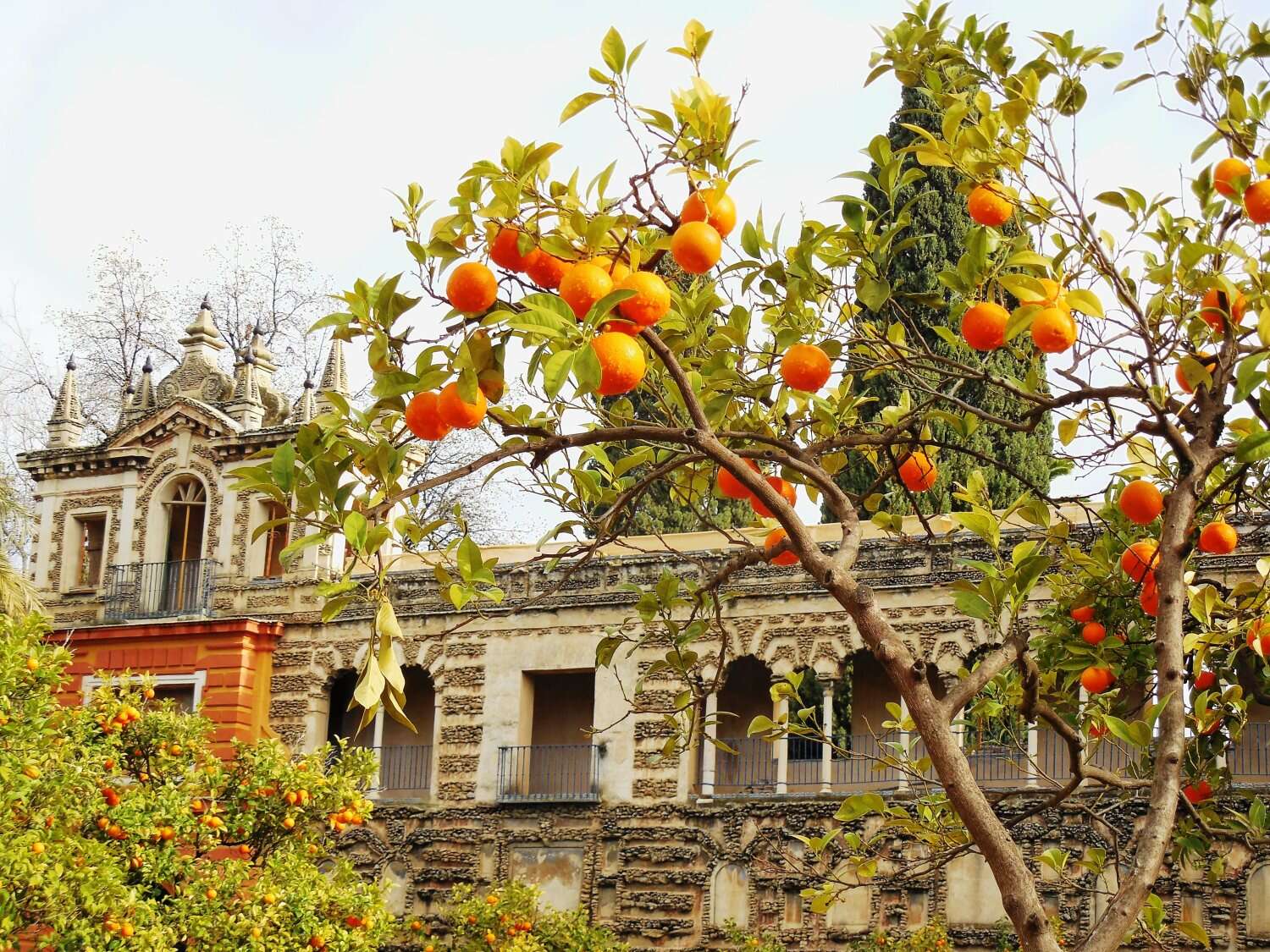
Velasquez and Murillo were born here. A young poet Garcia Lorca used to come here. Miguel Cervantes began to write his "Don Quixote". Lope de Vega didn't fail to pay his attention to Seville. Prosper Merimee and Georges Bizet put their Carmen to live in this city, Tirso de Molina and Wolfgang Mozart - Don Juan, and Beaumarchais and Rossini - Figaro. Some episodes of "Star Wars" and "Game of Thrones" were also filmed in Seville.
When to go to Seville
Whenever you want! It is warm in autumn and winter, but it can rain. There are few tourists, there are places in hotels, and their prices are lower. It’s the best time for a budget trip.
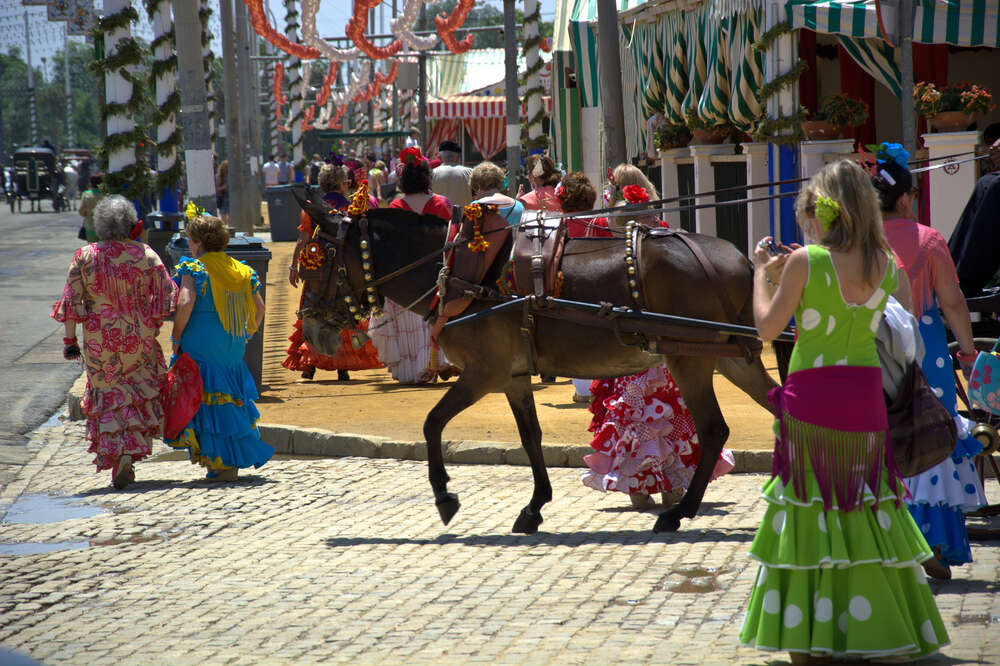
The high season is from February to June. Good weather, long days, local festivals. At this time, two popular events take place in Seville: Holy Week (Semana Santa) and April Feria (Feria de Abril). Holy Week dates change from year to year. The fair takes place from Palm Sunday to Easter Sunday. It is usually the end of March or April. For six days and seven nights, the Sevillians and tourists spend most of their time eating, drinking, dancing, singing and socializing. Hotel prices rise sharply. And also in spring, purple jacaranda blooms in Seville.
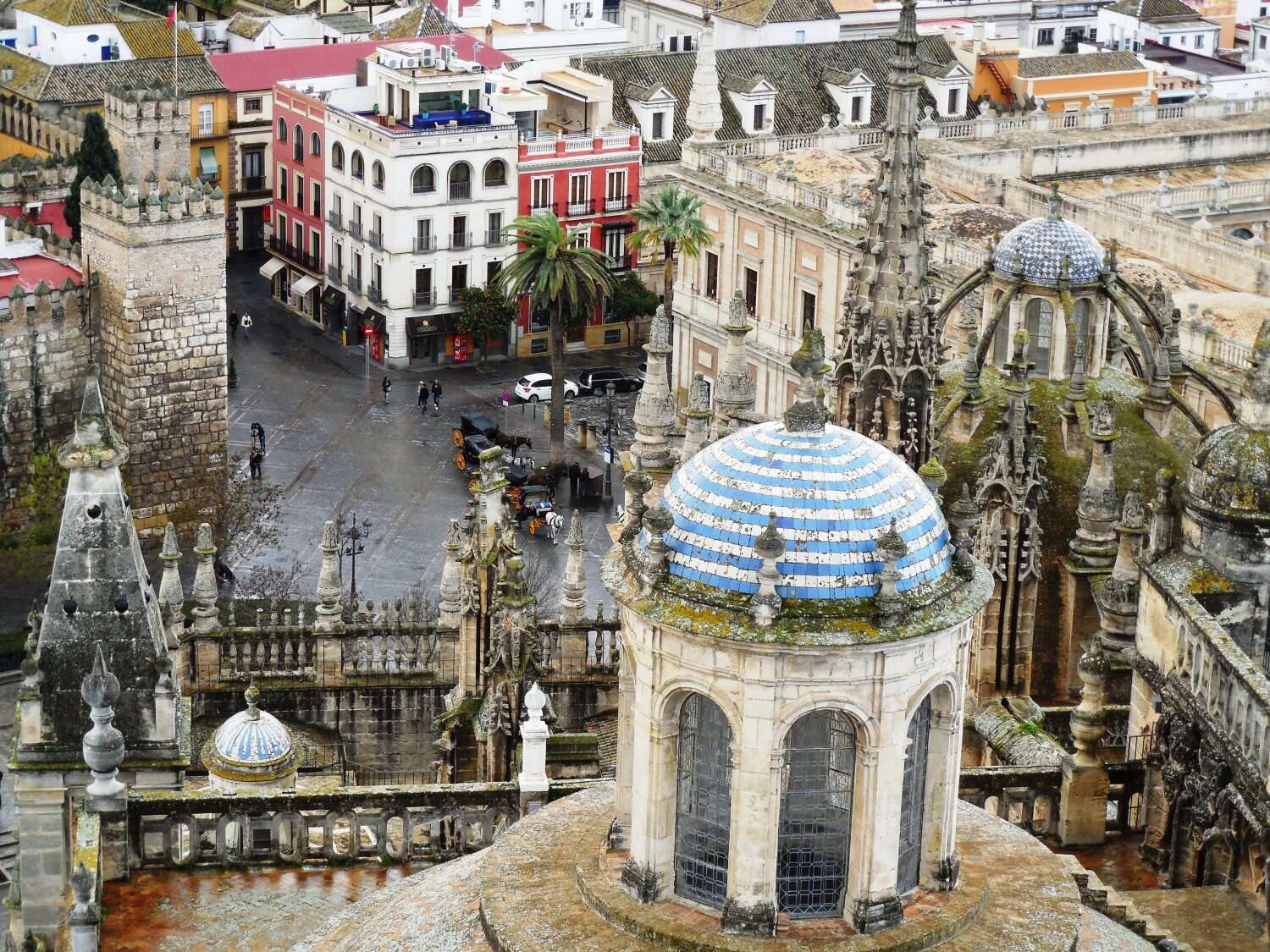
In July - August, it is very dry and hot. The temperature is often above 35 degrees. There are few tourists, the locals leave for vacations and holidays. The streets are empty in the afternoon, but the city comes back to life in the evening.
For how many days to go to Seville
One day is not enough for Seville. And two is not enough. Even three is not enough! Even a few weeks are not enough to feel the city, to go everywhere and see everything. Therefore, decide for yourself, taking into account the duration of your vacation and the fullness of your wallet.
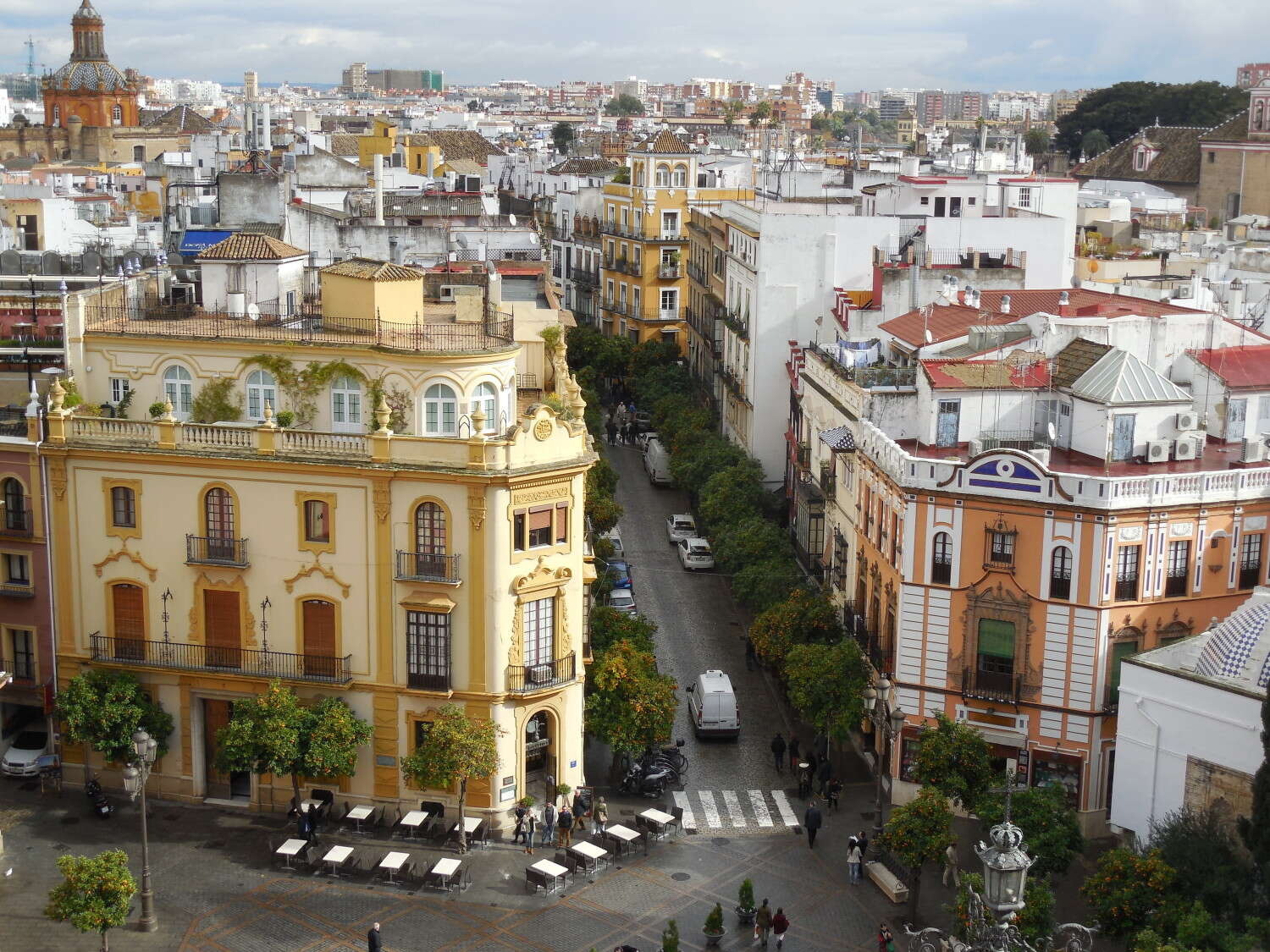
Fortunately for tourists, many attractions and places of interest are located in the old town and are close to each other.
If you have limited time, you can go on a tour around Seville by hop-on hop-off (we talked about such city sightseeing route buses). The ticket is valid for 24 or 48 hours. They cost respectively 21 and 29 euros. Opening hours are from 10.00 to 21.00.
For 1 hour and 15 minutes, without leaving the bus, you will see many landmarks of the city. The audio guide is available in 15 languages, including English. If you have enough time, go out, do some sightseeing and move to the next attraction. Buses run every 30-40 minutes. You can start and end the tour at any stop. There are 14 of them.
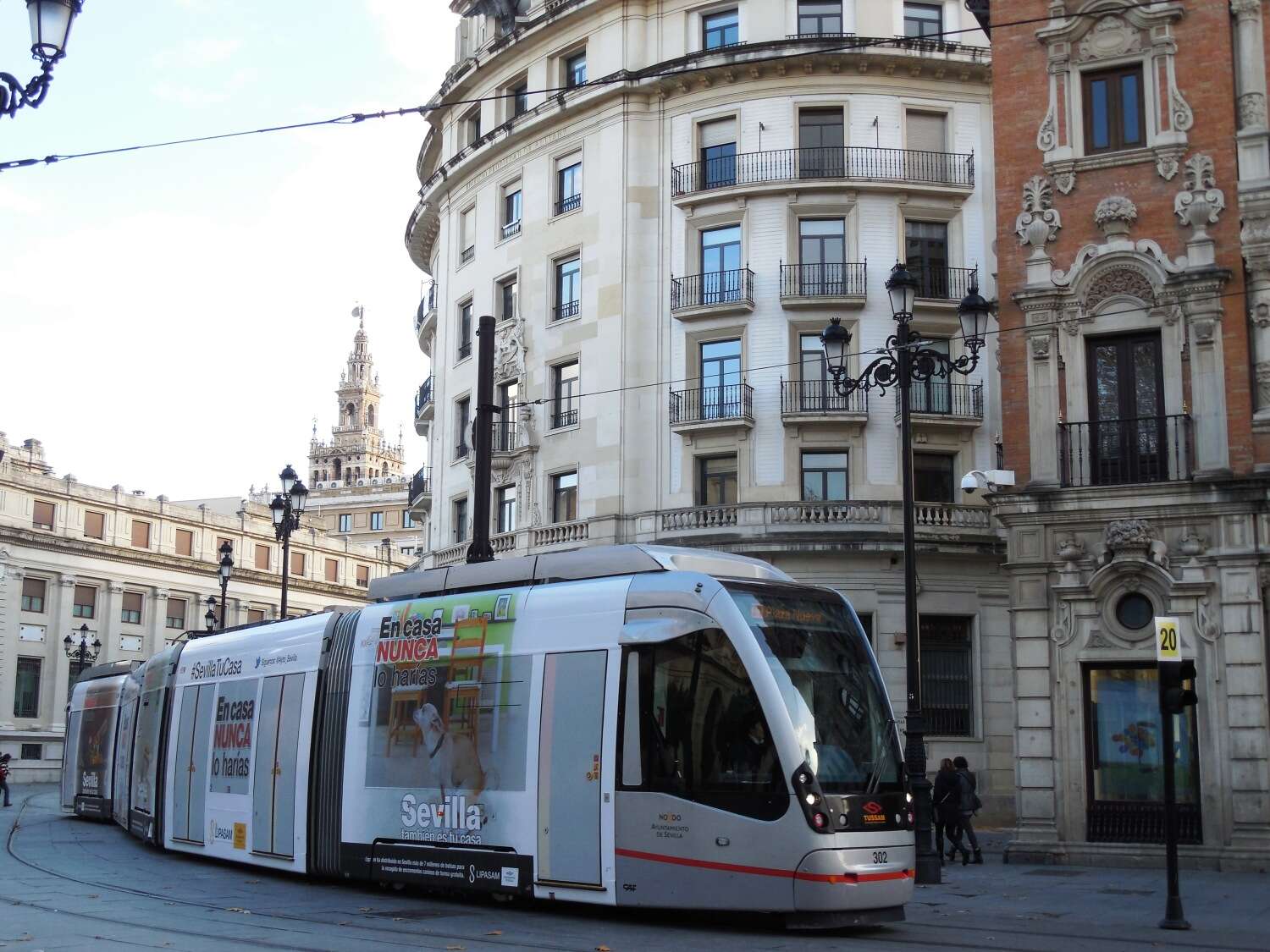
The ticket price includes 3 walking tours with a guide (usually in English and Spanish), a tour of the Museum of Fine Arts, entrance tickets to several museums and churches. You can learn about the time of these excursions and the work of museums in more detail here.
Walking around Seville on your own…
If you start with the Plaza del Triunfo with a column in the center in honor of the city’s rescue during the 1755 earthquake, you can immediately visit three world-famous sights.
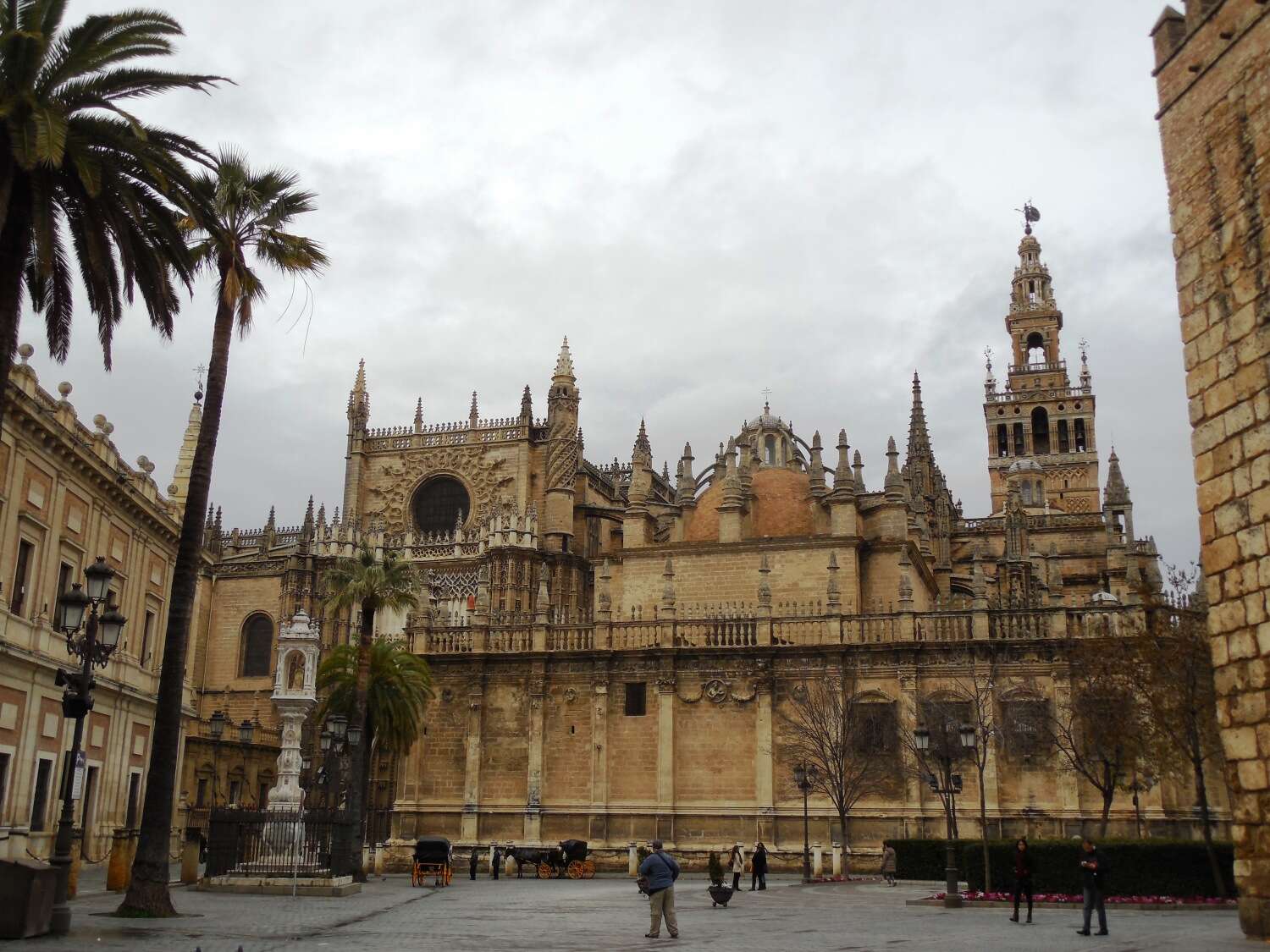
The Cathedral of Saint Mary of the See (Catedral de Santa Maria), a UNESCO World Heritage Site, is the largest Gothic cathedral in Europe, and perhaps in the world. It was built on the site of an old mosque. The construction is grand and impressive - both outside and inside. You can see stained glass, paintings, icons, sculptures, jewels, chapels, the golden altar, one of the most beautiful in the world. There is the sarcophagus with the ashes of Christopher Columbus inside as well as orange garden in the courtyard. You can enjoy organ concert, if you're lucky to get there.
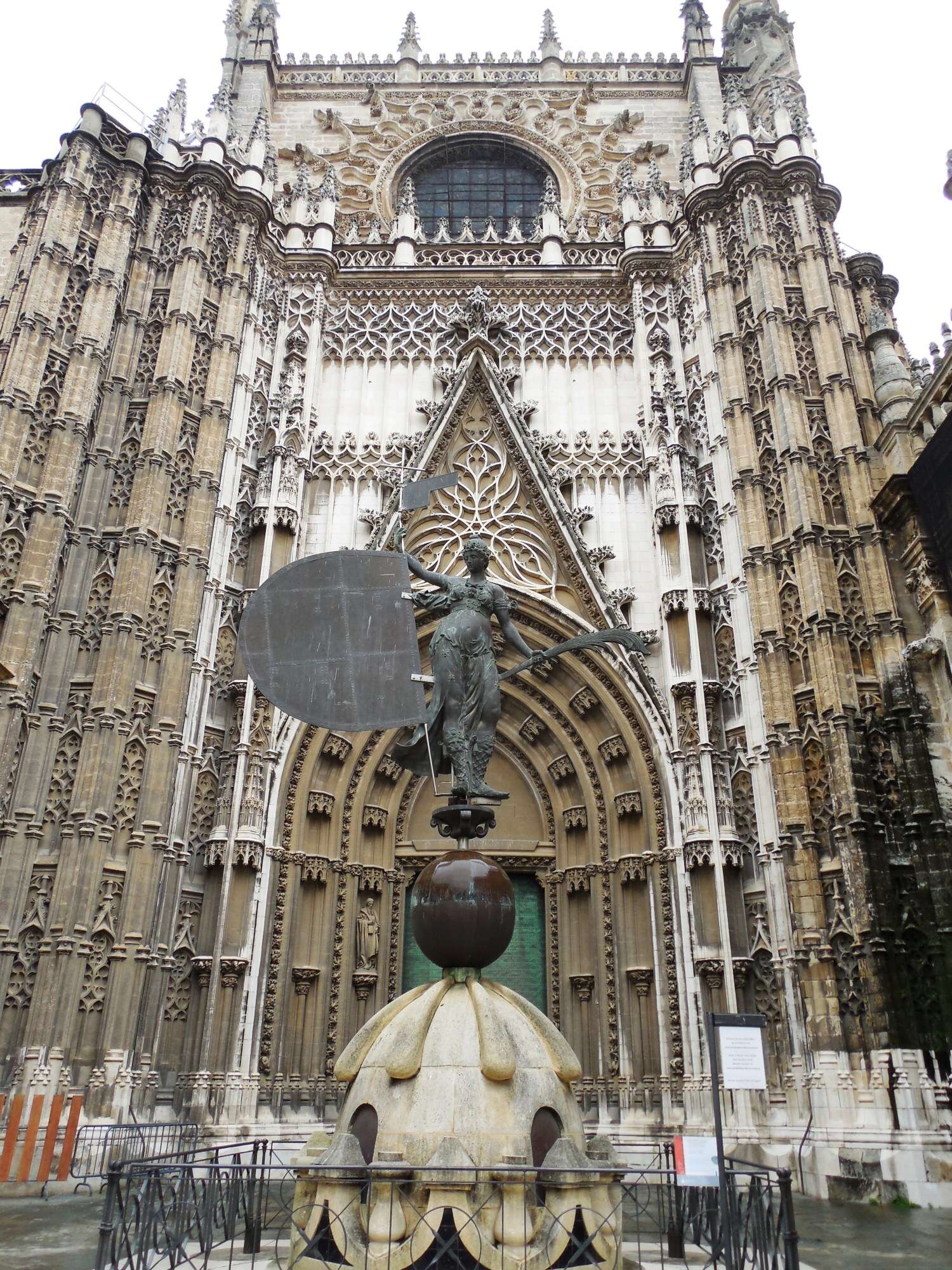
Entrance to the Cathedral is paid. An adult ticket costs 9 euros, and it's free for children under 14. On Monday from 16.30 to 18.00, the cathedral and the tower can be accessed for free. Actually, you have to pre-book a ticket online. Online booking can be used in the high season - with such a ticket you will not have to stand in a long queue. The ticket price includes a visit to the Giralda tower, chapels, patio, inspection of the altar.
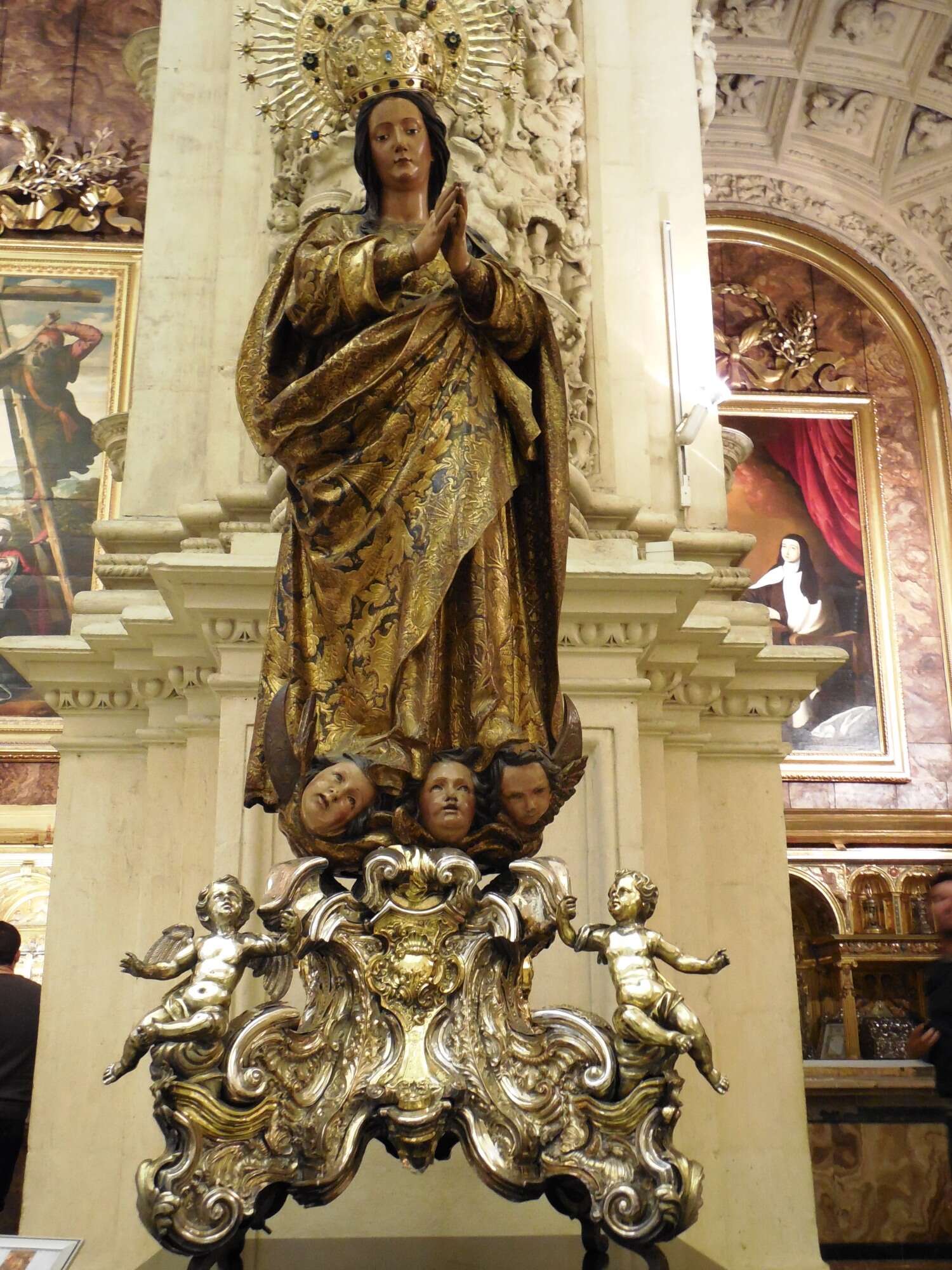
Near the Cathedral is the Giralda Tower (La Giralda). Once it was a minaret of a mosque, built in the XII century. It is one of the masterpieces of Arabic architecture. There is an observation deck here. At the very top of the tower, a wind vane is installed - a statue of Faith rotating in the wind with a banner in its hands.
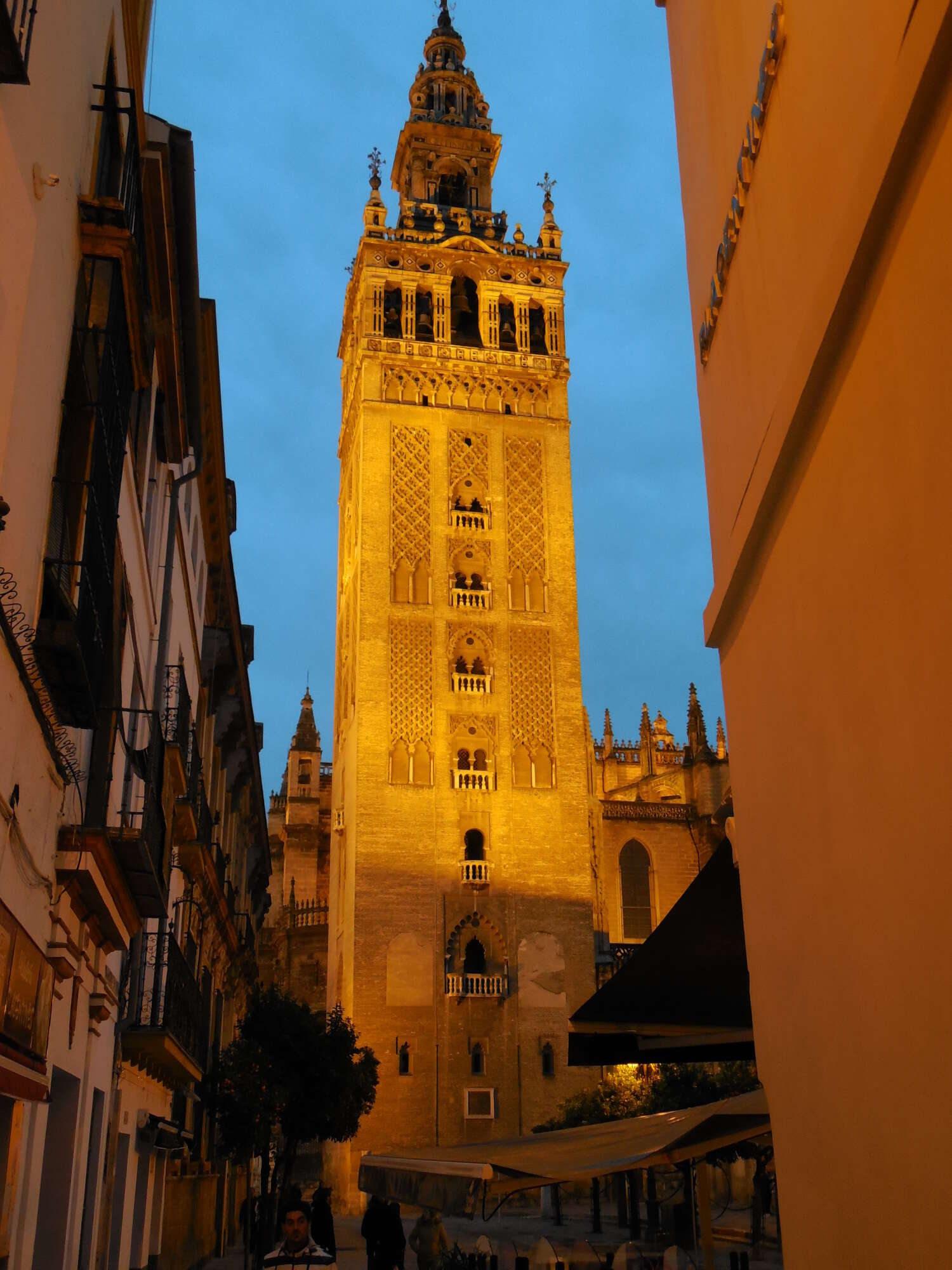
Get ready to go up! From a height of almost one hundred meters, Seville will be shown from a new side. The views of gardens, cafes and rooftop pools are really amazing!
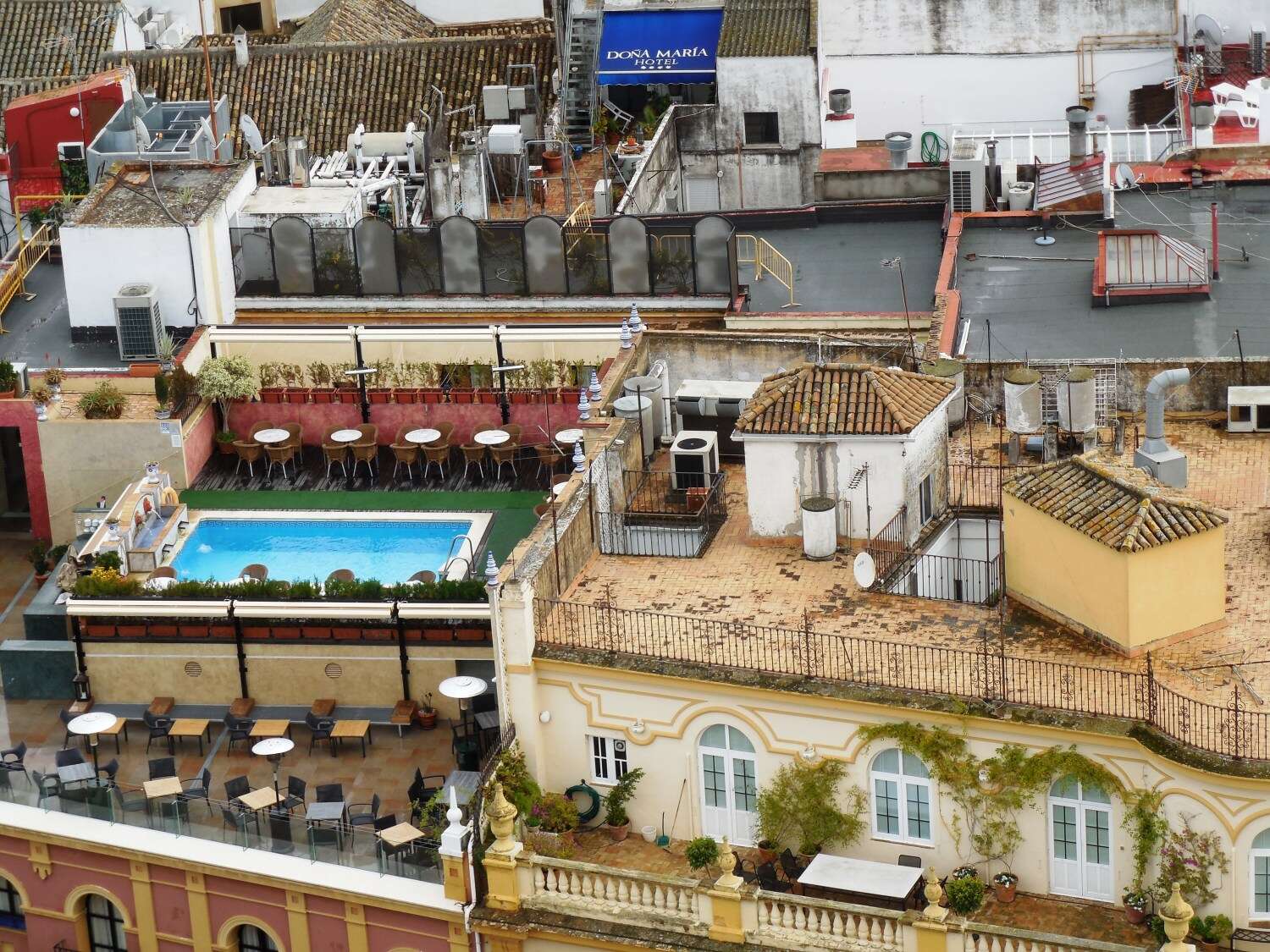
The Archive of Indies (Archivo de Indias) is also on the Triumphal Square. The building itself was built for the Seville merchants at the end of the 16th century. The archive was located here two centuries later. Together with all the relics, the building is listed as a UNESCO World Heritage Site. Here is a large collection of valuable documents related to the colonial past of the Spanish Empire. The earliest materials are dated to the 15th century. If the racks with documents pull in one line, it will stretch for 9 kilometers. 43 thousand packs with 80 million pages of original documents, 8 thousand maps and drawings are stored on the shelves. Themed exhibitions constantly take place in the archive. Entrance to the archive is free. You can see opening hours here.
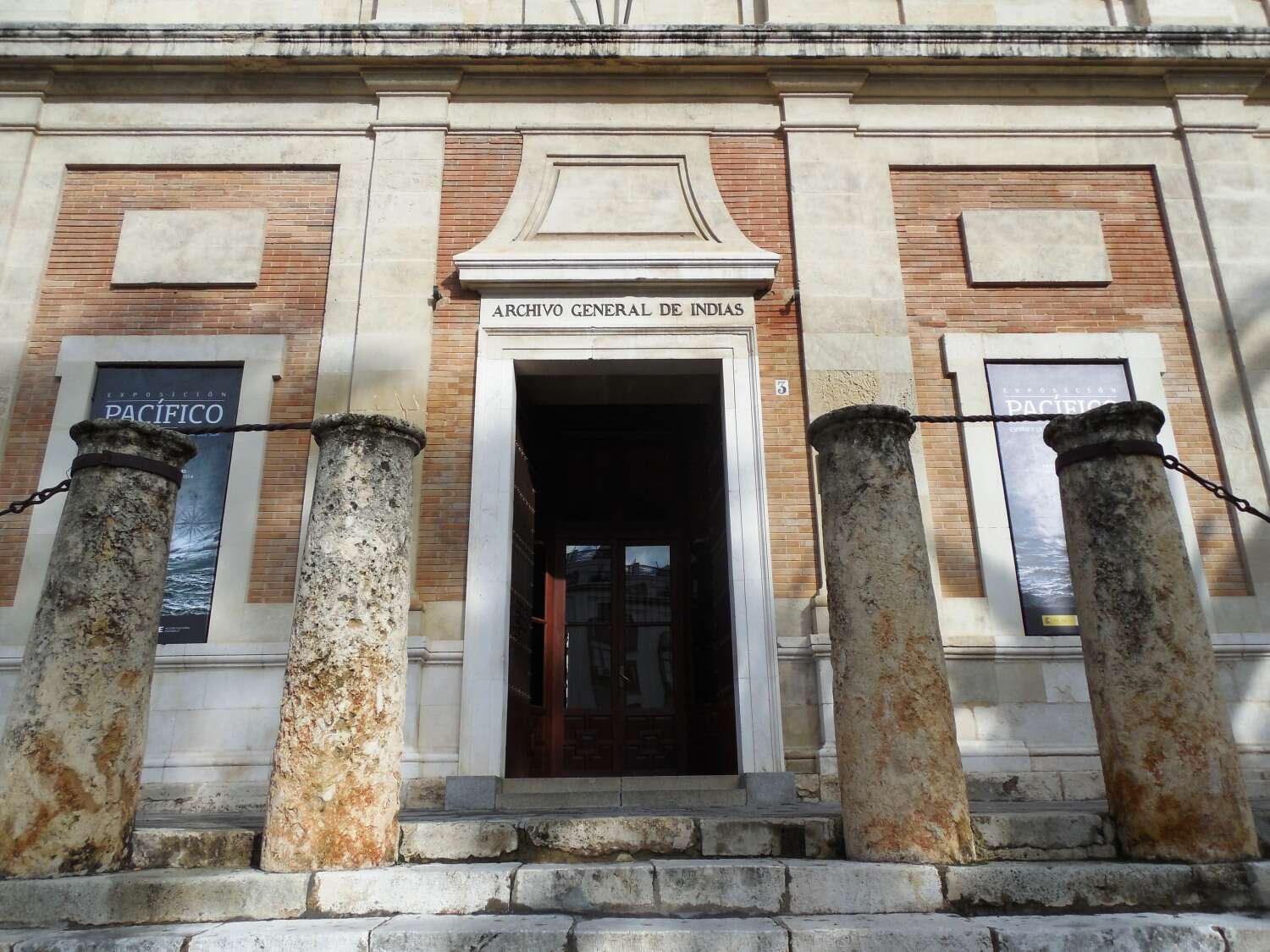
You can walk only a few minutes from the Triumphal Square to the Royal Palace of the Alcazar of Seville (Reales Alcazares de Sevilla). Alcazars are called fortresses or palaces built in Spain and Portugal during the reign of the Arabs.
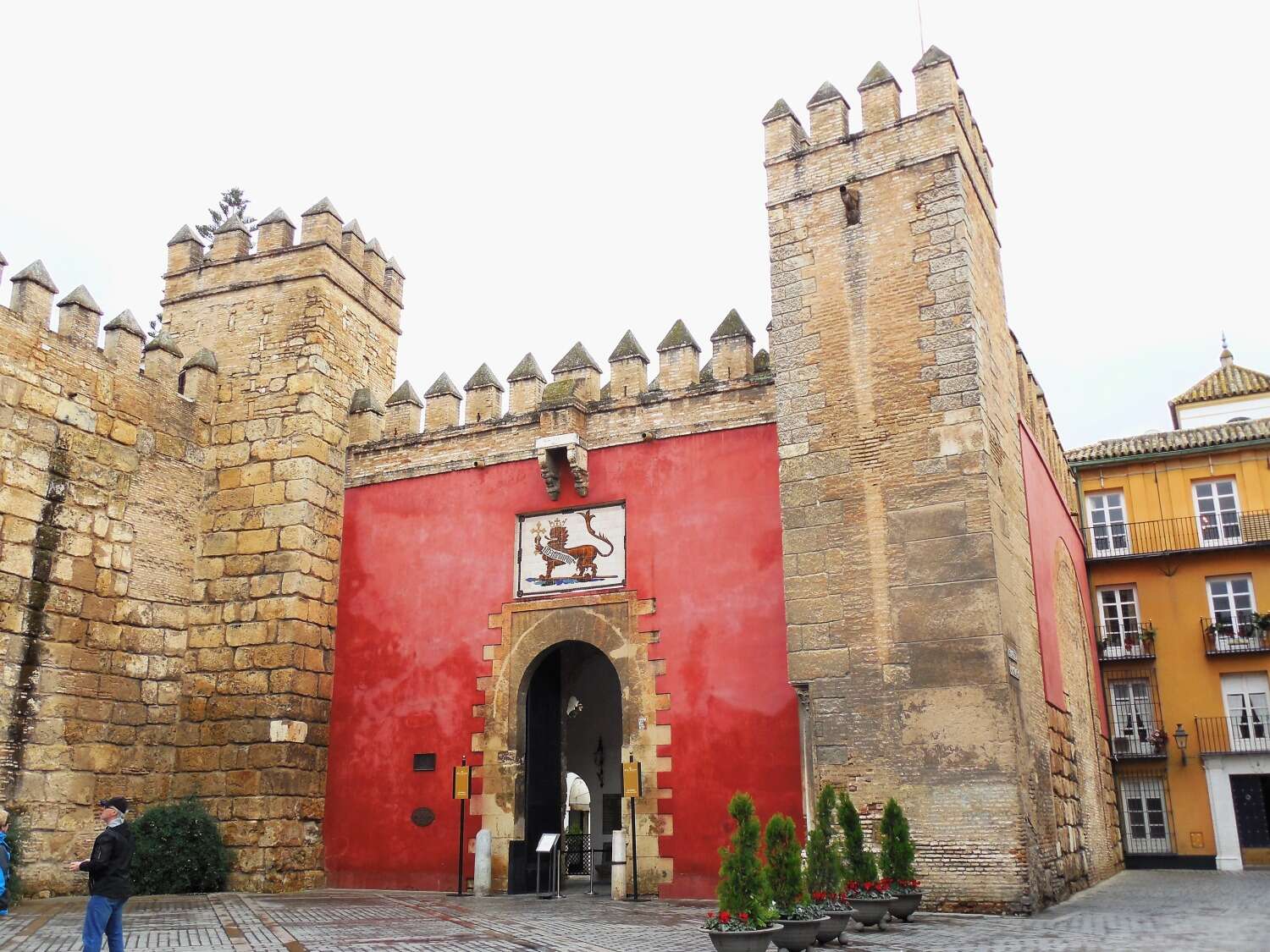
You can enter the Palace through the Lion Gate (Puerta del León). You can’t slip past them - they are painted in bright scarlet color, and in the upper part, there are lions - the coat of arms of the Spanish king Pedro I. From the ancient Alcazar, built in the X century, only part of the walls and the courtyard survived to our time. Most of the premises were built in the XIV century.
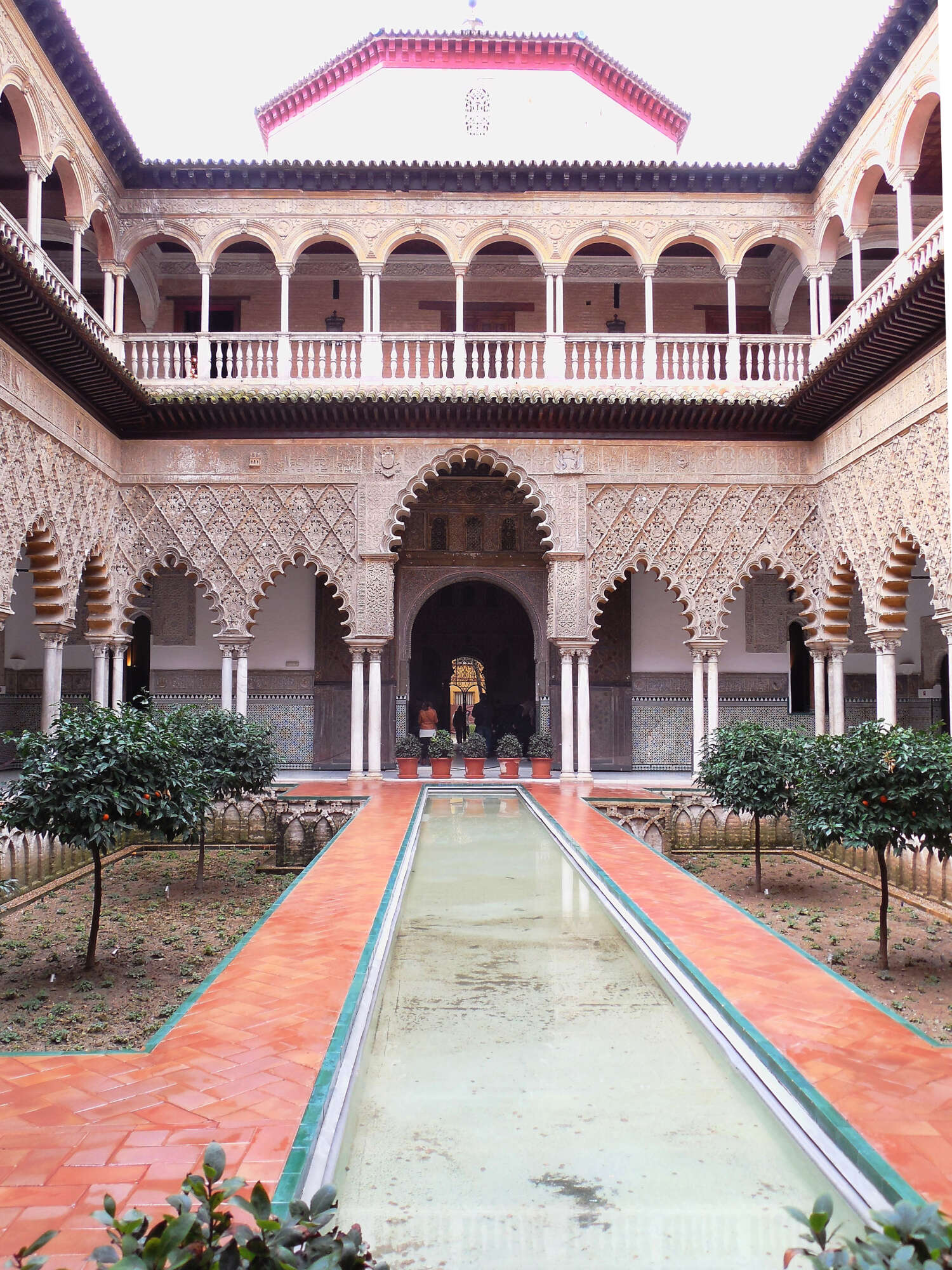
For seven hundred years, the Alcazar of Seville was the residence of the Spanish kings. It is one of the oldest royal palaces in the world, which is still used for its intended purpose. The palace is open to the public. You can look at the price and schedule here. On Monday, there is a time when you can go to the palace for free.
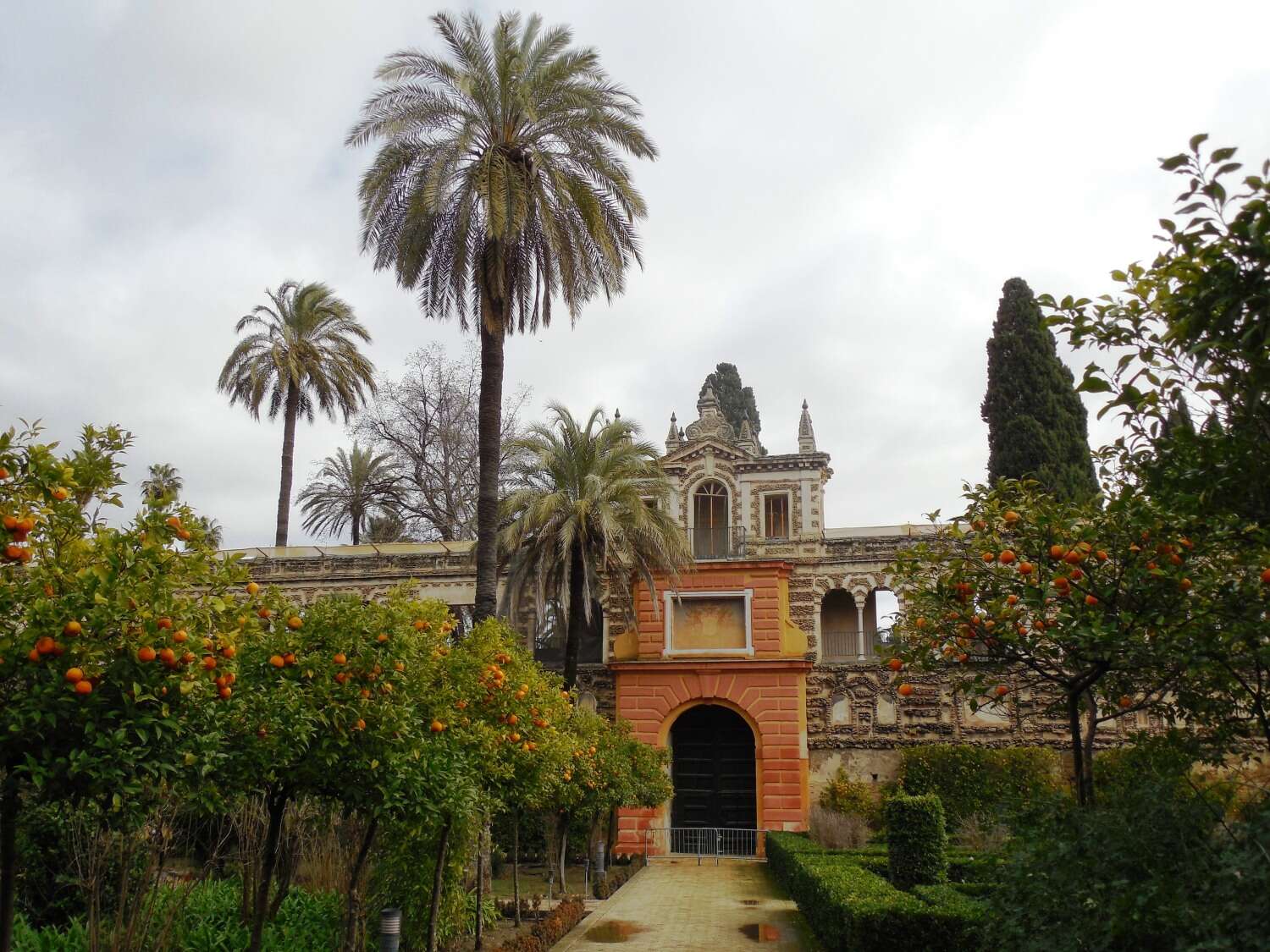
Alcazar Gardens adjoin the palace. This is a huge garden and park complex, divided into several gardens, created in different styles. These are Orange Grove, Large Garden, Garden of Flowers, Garden of Dances, Garden of the Cross, Garden of Troy, Garden of Poets, Ladies' Garden. In the Grutesko Gallery, there is the Fountain of Glory. In fact, it is a hydraulic body built in the seventeenth century - the only one preserved in Spain and one of the three that exists throughout Europe. You can listen to it at the beginning of each hour for 5 minutes. Just sit on the bench and wait!
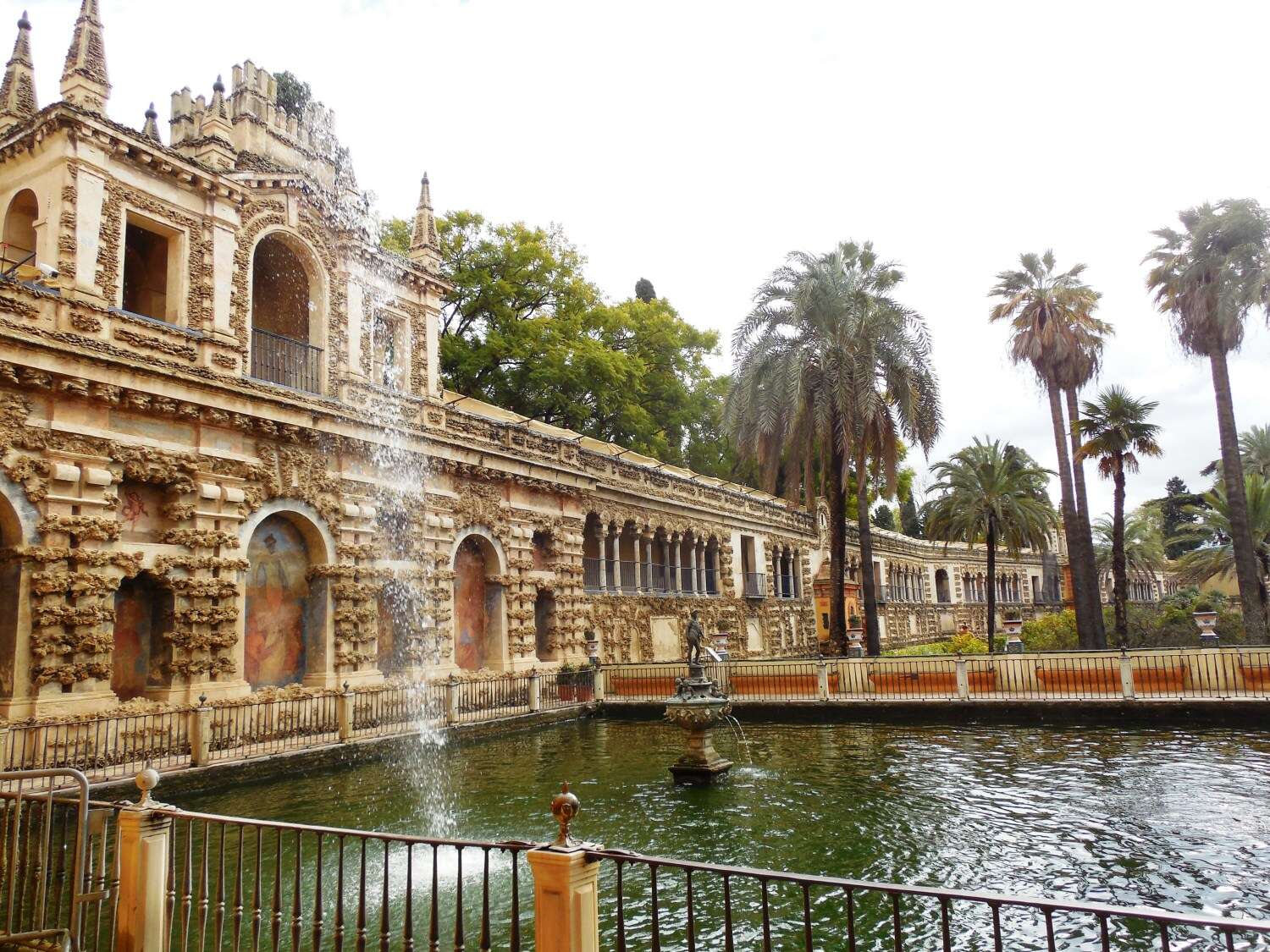
There are many things to enjoy here: cypress and palm trees, lemon and orange trees, pears and persimmon, myrtle and jasmine; ponds and fountains, grottoes and labyrinths, fish and peacocks. It is impossible to leave the park!
From the Alcázar, you can go to the Barrio de Santa Cruz area. There are a lot of looped narrow streets, white houses and green patios behind openwork bars. Jewish merchants used to live here once, now - it is a district for wealthy citizens.
Hide the map - just wander and enjoy Seville!
Another attraction of the city is the Basilica de la Macarena. It was built in the middle of the last century on the site of the fire-damaged San Gil Church. The facade is painted white with ocher color. Above the main altar, there is the figure of the Sorrowful Virgin of Macarena, one of the most revered in Seville. In the basilica there is a museum of sacred art and religious rites.
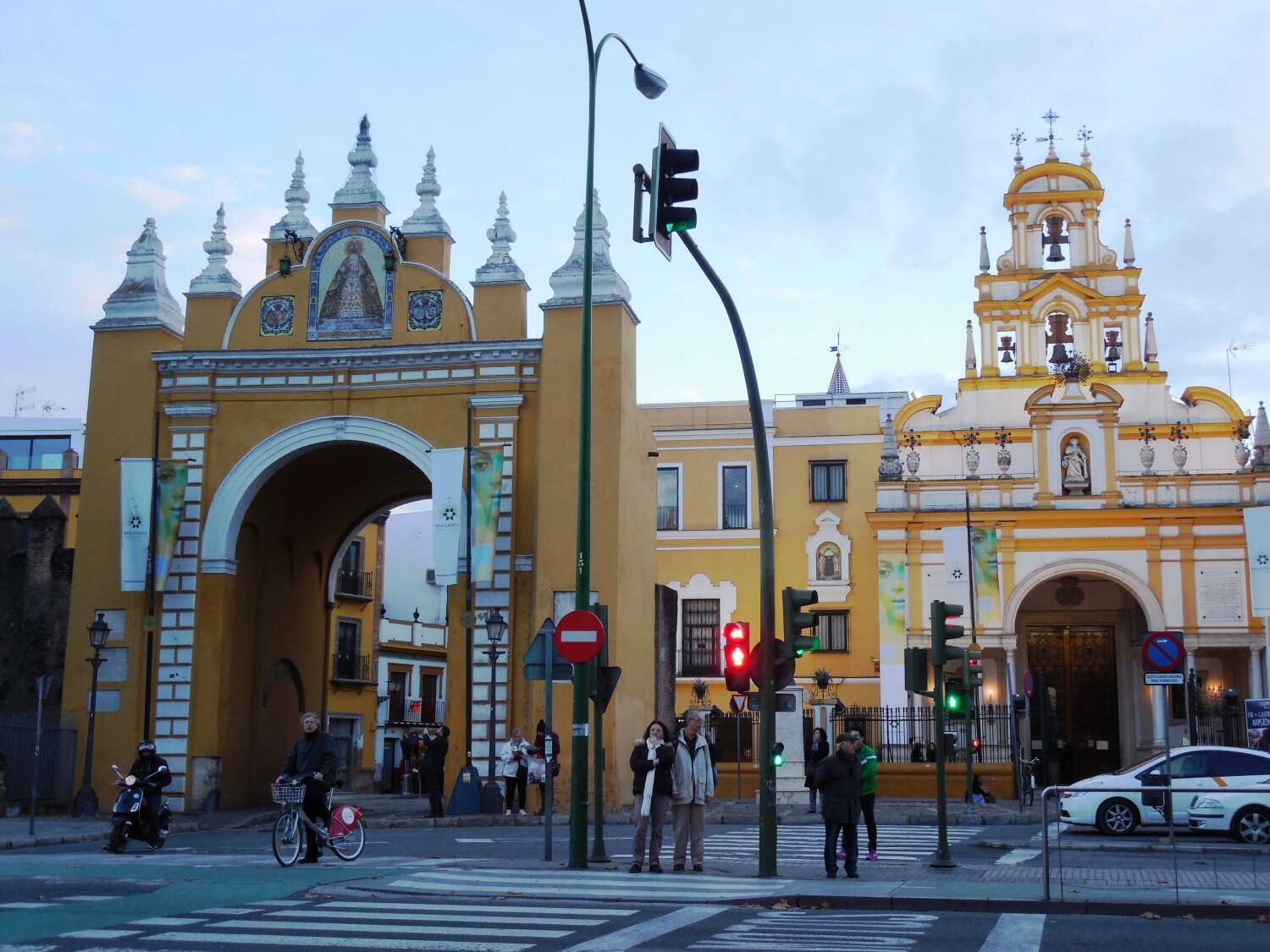
If you find yourself in Seville from April to October, you can get to the bullfight, which takes place on the Plaza de Toros de la Real Maestranza de Caballeria de Sevilla, popularly known as La Maestrans. This is one of the oldest and most beautiful bullfighting arenas in Spain. Tickets are sold in the box office near the arena. They cost from 7 to 170 euros. The price depends on the popularity of the performing bullfighter, on the place where you will sit (the “somber” side (the shadow) is more expensive than the “sol” side (the sun)), on the day of a bullfight (it may be held on a holiday). You can also buy tickets online at the Maestrans website.
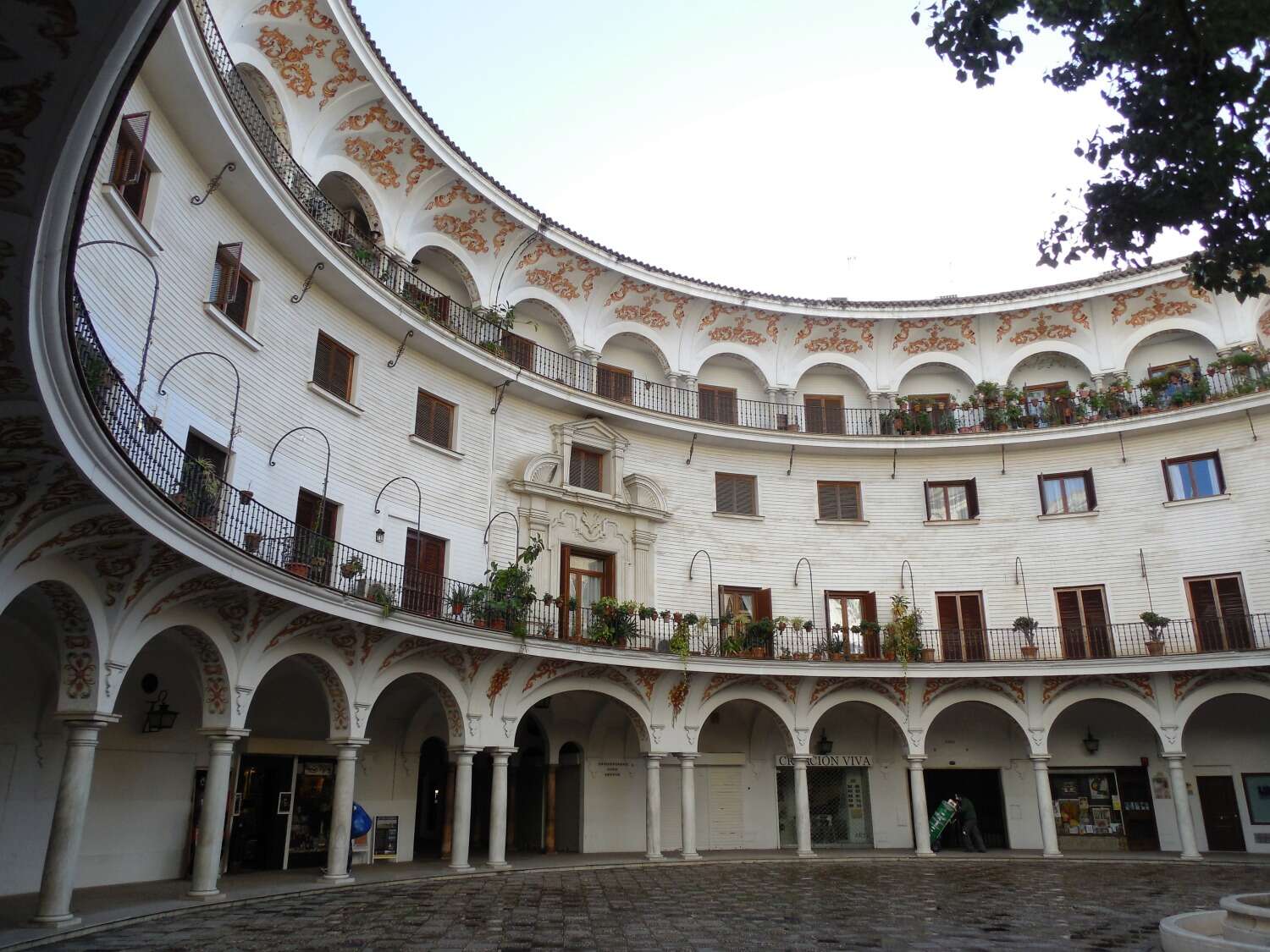
Next to the arena, there are the chapel, where the matadors pray before the battle, the hospital, where the wounded are brought from the arena, the Bullfighting Museum, where the famous bullfighters, posters and costumes are kept. Opposite the arena on the embankment, there are the statues of the most famous toreros and the monument of Carmen. If you don't have time or desire to watch a bullfight, you can simply visit the Museum. Ticket price is 8 euros.
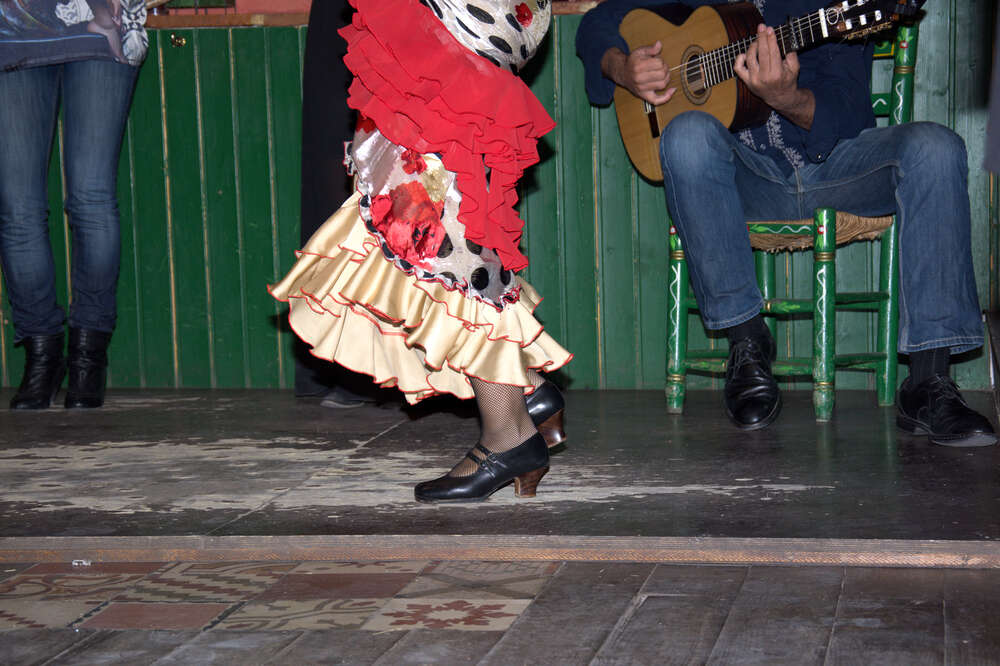
Make sure to visit the Plaza de España. It is located next to the park of Maria Louise. The area is surrounded by buildings built in 1929 for the Ibero-American Exhibition. Today, there are the municipality of Seville and city museums here. The government building has the shape of a semicircle and special niches with benches, decorated with ceramic tiles in honor of all the provinces of Spain. Pictures of colored mosaics depict key events in the history of Spanish provinces. The architecture of space combines two styles: Art Deco and Mudejar. In the center of the square, there is a huge fountain. Small bridges are laid through it, dividing the space into sections, symbolizing the four ancient kingdoms of Spain.

On the banks of the Guadalquivir River, there is the Torre del Oro Tower - the Golden Tower. It was built in the 13th century in the form of a twelve-sided dwarf, and was part of the unretained Alcazar fortress wall that protected the harbor. In different centuries, the tower had a chapel, a prison, a storehouse of royal treasures, a warehouse for royal treasures. Nowadays, the Maritime Museum is located here. On Mondays, the tower can be accessed for free.
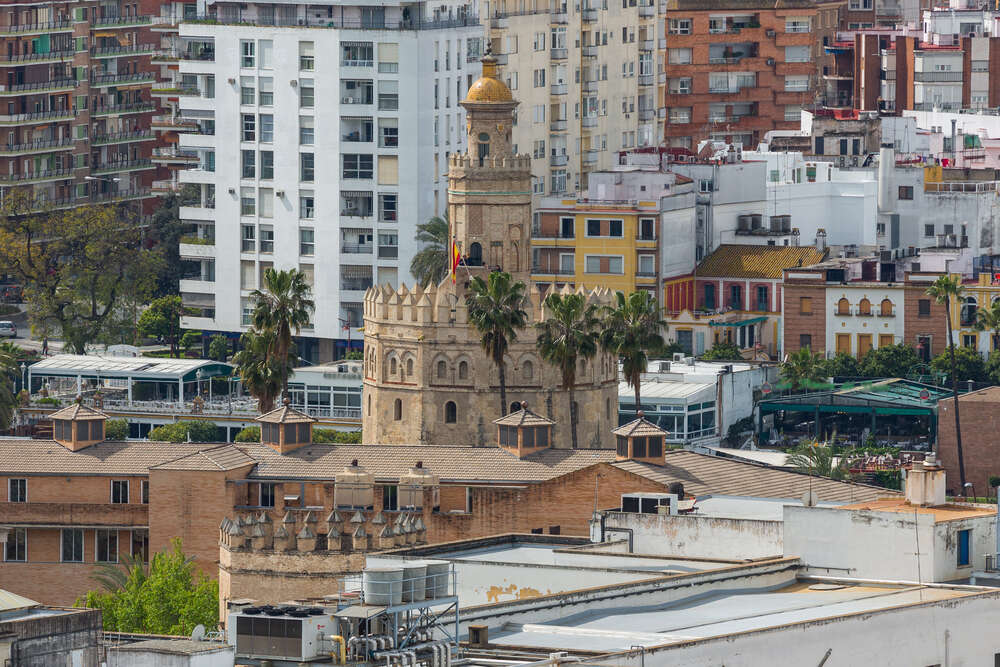
If you have a little bit more free time - take a look at the Palace of San Telmo. It is located on the banks of the Guadalquivir. Previously, there was a nautical school. And San Telmo patronized the sailors. Now, there is the residence of the President of the Andalusian Autonomous Government in a beautiful red-yellow building with statues of famous Sevillians installed on the facade.
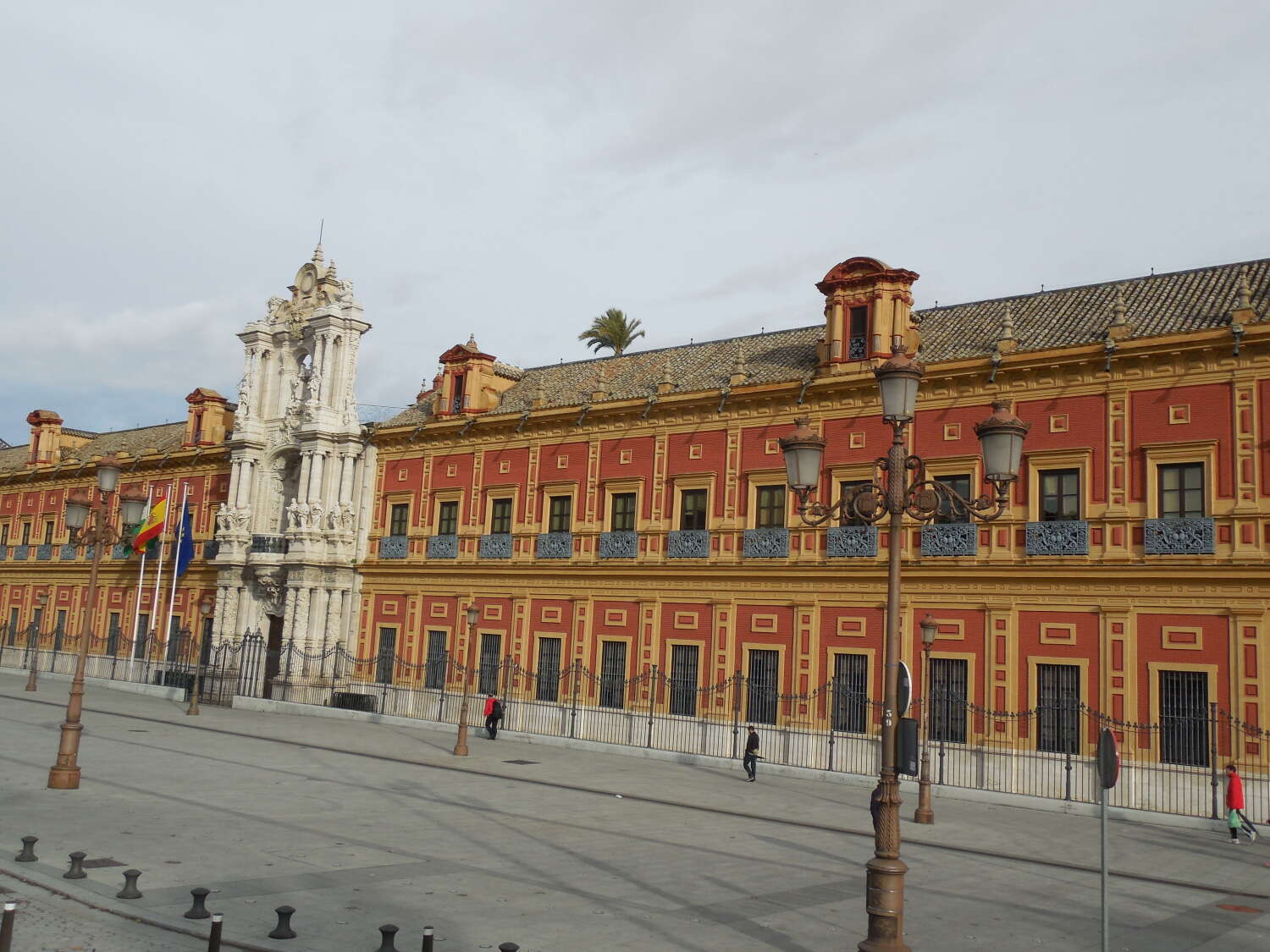
Museums and monuments of Seville
There are many museums in Seville. These are the Museum of Fine Arts, the Museum of Popular Arts and Traditions, the Flamenco Dance Museum, the Bullfighting Museum, the Guitar Museum, the Ceramica Triana, the Maritime Museum, the Archaeological Museum.
There are many monuments in Seville. In the city streets, you can meet the immortalized Velasquez, Mozart, Carmen, Don Juan, Christopher Columbus, King Ferdinand the Third, Princess Maria Mercedes Bourbon-Sicilian ...
Discovering America
In Seville and its surroundings, there are many places associated with the Don Quixote of the Seas. This name was given to Christopher Columbus by Stefan Zweig. Along the Guadalquivir between the Puente San Telmo and Puente Isabel II bridges, there is Christopher Columbus Avenue (Paseo de Cristóbal Colón). The Archives of India keeps his letters and reports. There is a monument dedicated to the discovery of America in the Jardines de Murillo.
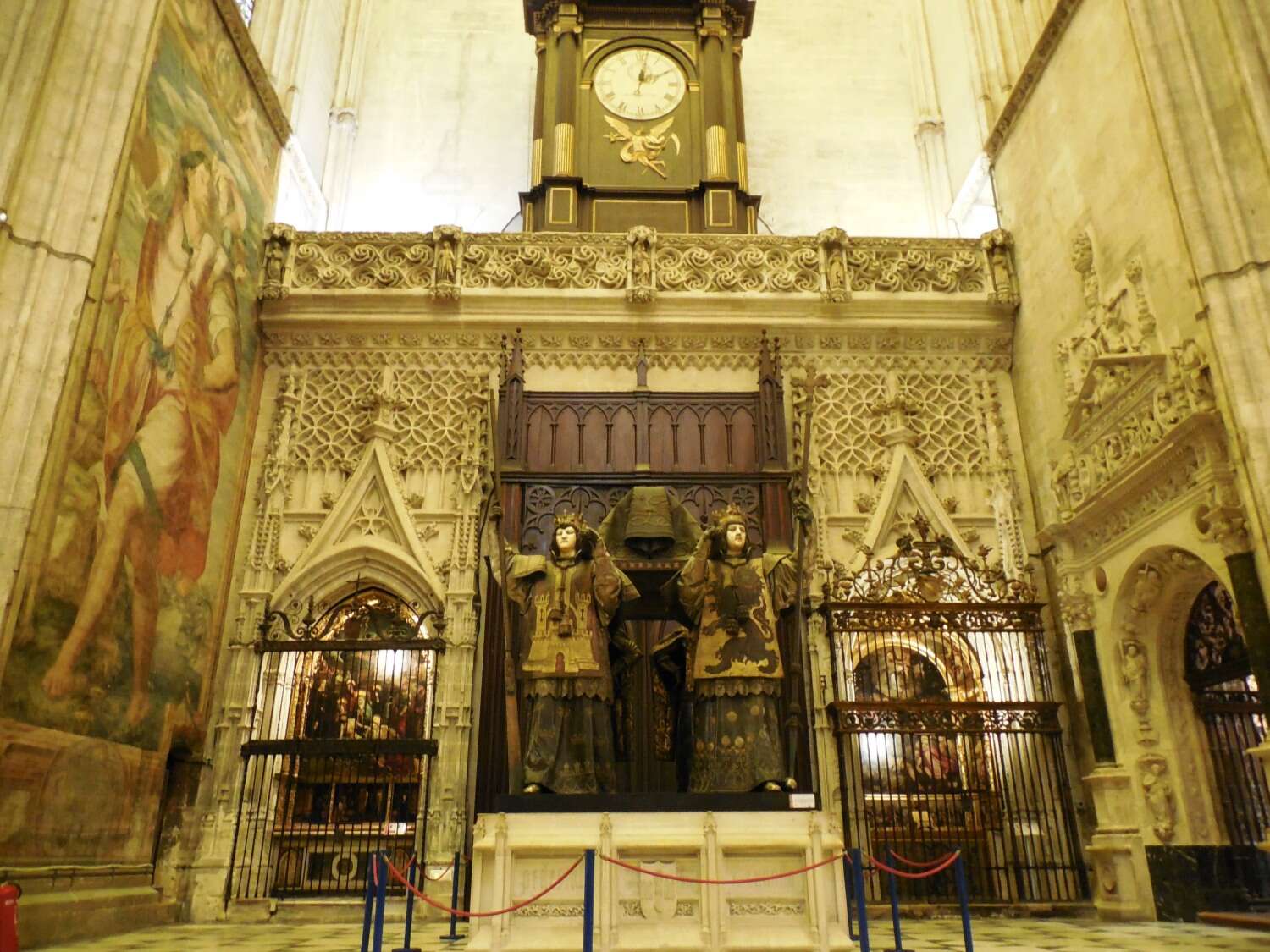
In the monastery of La Rabida, which is about a hundred kilometers from Seville, Columbus was preparing for his journey. And from Palos de la Frontera, three caravels of the land discoverer left to the west more than five hundred years ago. The ashes of Columbus rest in the Cathedral of Seville. The figures of the four heralds, striking in size and grandeur, symbolizing the four kingdoms - Castile, Leon, Aragon and Navarra, are carrying a sarcophagus with the remains of the great navigator.
Walking around Guadalquivir
It's already evening, your legs hurt. And you just want to sit with a glass of sherry. It’s time to go on a boat trip listening to Garcia Lorca’s lines: “The Guadalquivir is flowing in the shade of the orange gardens.”
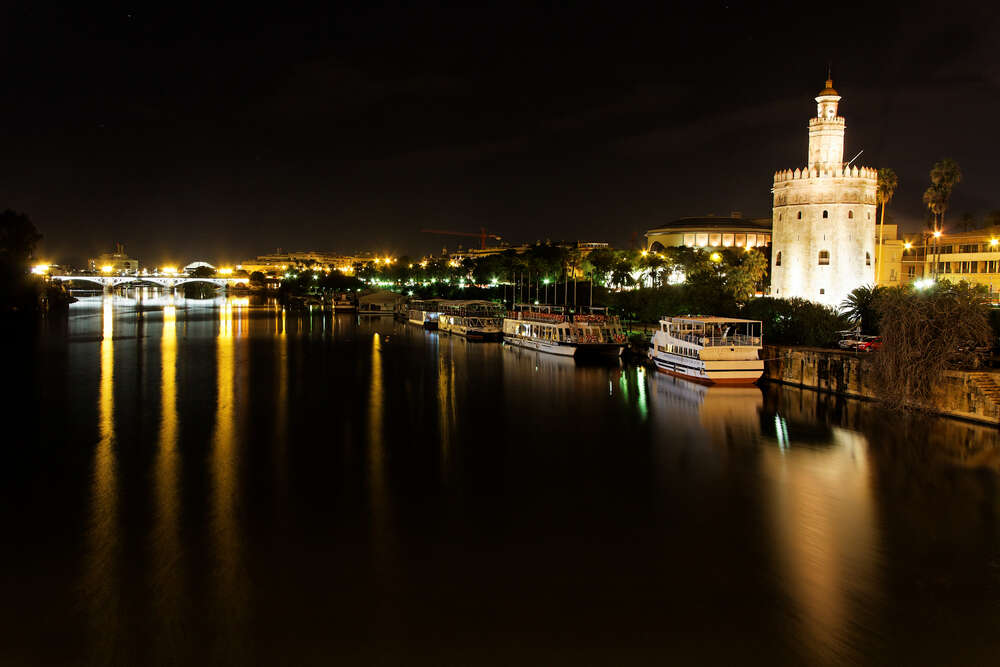
Or to Alexander Pushkin's words: “Night winds are flowing into the air. The Guadalquivir is rumbling, running.”
If you travel with children
On the island of Cartuja, located in the historic part of Seville, there is the "Magic Island" (Isla Mágica) - an amusement park. It is divided into 6 thematic zones, each of which is associated with travel and geographical discoveries.
There is also an Agua Magica water park. Water slides for adults and children, a swimming pool with artificial waves, a loose sandy beach. You may get stuck here for the whole day. If you get hungry, you can eat in numerous cafes and restaurants or buy ice cream at a kiosk (and it will be more expensive than in the city). And if you want to have something to remember, buy souvenirs.
Here is the park schedule, prices and discounts on tickets, a description of all attractions with the recommended restrictions on height and age. The park doesn't work every day, so look into the pre-schedule. From early November to late April, Isla Mágica is closed.
Afterword
A few days have passed, and you suddenly realize that you have not been to a flamenco concert yet. Seville just doesn't let you go!

 Русский
Русский
 Deutsch
Deutsch
 Українська
Українська
 Español
Español
 Italiano
Italiano
 Français
Français
 Polski
Polski
 Čeština
Čeština
 Қазақ
Қазақ
